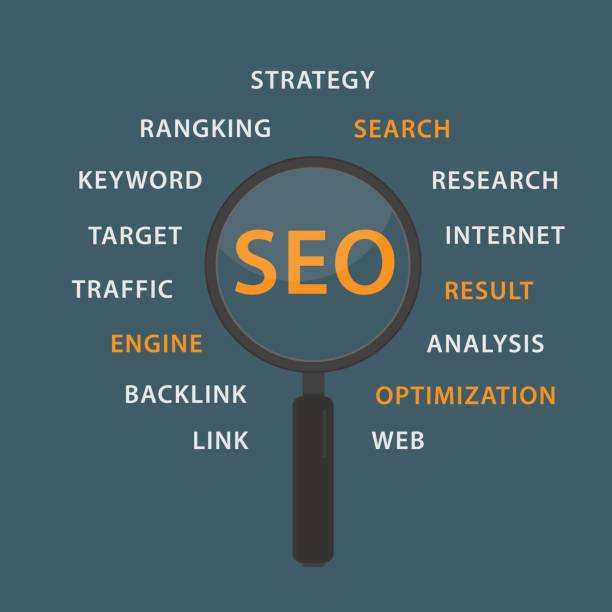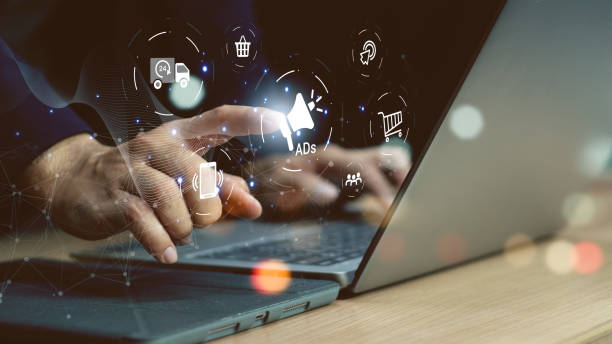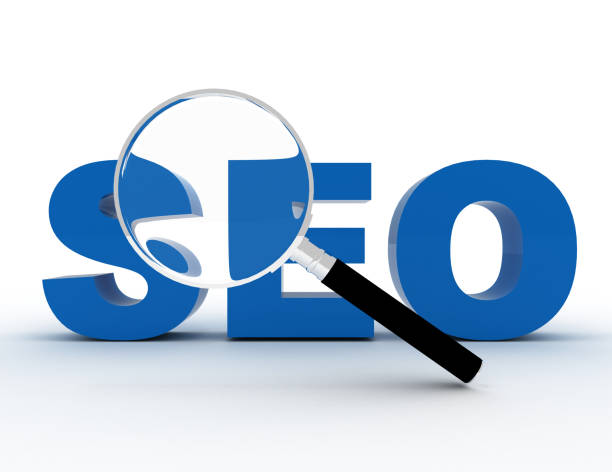What is On-Page SEO? Definition, Importance, and Key Concepts
On-Page SEO refers to a set of actions taken within a website to improve the site’s ranking in search engines.
These actions include optimizing content, site structure, HTML tags, and other internal elements.
The importance of #On-Page SEO lies in the fact that it helps search engines better understand the topic and content of the site’s pages, and as a result, display the site in search results relevant to users.
In fact, #On-Page SEO is the foundation for success in SEO, and without it, external (Off-Page SEO) efforts alone will not be sufficient.
Key concepts of On-Page SEO include:
- Quality Content Valuable, relevant, and engaging content for users and search engines.
Content marketing Wikipedia - Keywords Identifying and using words that users use to search for content related to the site.
- Title Tags HTML tags that specify the page title and are displayed in search results.
- Meta Descriptions A summary of the page content that appears below the title in search results.
- URL Structure Website page addresses that should be short, readable, and contain keywords.
- Heading Tags HTML tags (H1 to H6) used to organize content and specify headings and subheadings.
- Optimized Images Using images with appropriate size, relevant file name, and alternative text (Alt Text) to describe the image.
- Internal Links Linking to other pages on the site to improve navigation and transfer authority.
By following these key concepts, you can significantly improve the On-Page SEO of your site and increase your site’s ranking in search engines.
On-Page SEO helps you to succeed.
With the right knowledge of On-Page SEO, you can win the competition.
Did you know that 94% of first impressions of a company are related to its website design?
Rasaweb helps you create the best first impression by providing professional corporate website design services.
✅ Create a professional and reliable image of your brand
✅ Easier attraction of potential customers and improved online position
⚡ Get free corporate website design consultation
Keyword Research: A Fundamental Step in On-Page SEO
Keyword research is the process of identifying the words and phrases that users use to search for information related to your business in search engines.
This process is critical for On-Page SEO because it helps you to:
- Produce content around the words that your target audience is searching for.
- Optimize title tags and meta descriptions with relevant keywords.
- Design the URL structure of your pages to include keywords.
- Use keywords in the main text of the content, heading tags, and alternative text of images.
Click here to preview your posts with PRO themes ››
There are various tools available for keyword research, including:
- Google Keyword Planner A free tool from Google that allows you to check related keywords, search volume, and competition level.
- SEMrush A paid tool that offers more advanced features for keyword analysis, competitors, and trends.
- Ahrefs Another paid tool that helps you check valuable keywords, backlinks, and the ranking of your site and competitors.
When researching keywords, pay attention to the following:
- Relevance Keywords should be relevant to the subject and content of your site.
- Search Volume Keywords should have a reasonable search volume to drive decent traffic to your site.
- Competition Level Keywords should have a suitable level of competition so that you can achieve a good ranking in search results.
- Search Intent Keywords should match the search intent of users to meet their needs.
By conducting thorough and principled keyword research, you can dramatically improve your site’s On-Page SEO and attract targeted traffic to your site.
Content Optimization: The Backbone of On-Page SEO
Content is king! This phrase has been heard many times in the world of SEO, and the reason is clear: high-quality, valuable, and relevant content is the main factor in attracting users and search engines to a website.
Content optimization for On-Page SEO includes:
- Producing Unique and Original Content Avoid copying content from others and try to produce content that is valuable and new for your users.
- Using Keywords Use keywords naturally and intelligently in the text of the content, heading tags, and alternative text of images.
- Organizing Content Use heading tags (H1 to H6) to organize content and specify headings and subheadings.
- Readability of Content Use short paragraphs, simple sentences, and lists to increase the readability of the content.
- Using Images and Videos Use related and high-quality images and videos to make the content more attractive and increase user engagement.
- Updating Content Update old content regularly to keep the information accurate and relevant.
Click here to preview your posts with PRO themes ››
Content optimization is not just about using keywords, but about providing content that meets the needs of users and provides them with added value.
By producing high-quality and optimized content, you can improve your site’s On-Page SEO and increase your site’s ranking in search engines.
Example
| Element | Description | Best Practice |
|---|---|---|
| Page Title | The title of the page that appears in search results. | Use the main keyword, be attractive and concise. |
| Meta Description | A summary of the page content that appears below the title in search results. | Provide attractive and persuasive descriptions, use keywords. |
| Heading Tags | HTML tags (H1 to H6) that are used to organize content. | Use keywords in heading tags, observe the hierarchy of tags. |
The Importance of URL Structure in On-Page SEO
The URL structure, or address of website pages, is one of the important factors in On-Page SEO.
Optimized URLs help search engines better understand the subject and content of the site’s pages, and as a result, display the site in search results relevant to users.
Optimized URLs also help users easily find and remember site pages.
Features of an Optimized URL:
- Short and Concise URLs should be as short and concise as possible and avoid unnecessary words.
- Readable and Understandable URLs should be readable and understandable and show users what the page content is.
- Including Keywords URLs should include keywords related to the page topic.
- Using Hyphens Use hyphens (-) instead of underscores (_) or spaces to separate words.
- Not Using Capital Letters URLs should be written in lowercase letters.
- Using SSL Use the secure SSL (HTTPS) protocol to increase security and user trust.
HTTPS Wikipedia
Examples of Optimized and Non-Optimized URLs:
- Optimized
example.com/seo-internal - Non-Optimized
example.com/page?id=123 - Optimized
example.com/blog/how-to-optimize-images-for-seo - Non-Optimized
example.com/blog/article123
By following these tips, you can optimize your site’s URL structure for On-Page SEO and increase your site’s ranking in search engines.
On-Page SEO guarantees your success.
Make time for On-Page SEO.
Did you know that 94% of first impressions of a company are related to its website design?
Rasaweb helps you create the best first impression by providing professional corporate website design services.
✅ Create a professional and reliable image of your brand
✅ Easier attraction of potential customers and improved online position
⚡ Get free corporate website design consultation
Optimizing Images for On-Page SEO
Images play an important role in the attractiveness and engagement of users with a website.
However, unoptimized images can slow down site loading speed and negatively impact On-Page SEO.
Optimizing images for On-Page SEO includes:
- Choosing the Appropriate Format Use JPEG, PNG, or WebP formats for images.
JPEG is suitable for images with many colors, PNG is suitable for high-quality and transparent images, and WebP is suitable for low-volume and high-quality images. - Reducing Image Size Use image compression tools to reduce image size without sacrificing quality.
- Using a Relevant File Name Choose image file names with keywords related to the image topic.
- Adding Alternative Text (Alt Text) Add alternative text (Alt Text) to explain the image to search engines.
Alt Text should be short, descriptive, and include keywords. - Using Appropriate Dimensions Display images with appropriate dimensions on the site and avoid enlarging small images.
- Using an Image Sitemap Create an image sitemap and submit it to Google so that search engines can better find your site’s images.
By optimizing images, you can increase site loading speed, improve site ranking in search engines, and provide a better user experience for visitors.
Internal Linking: A Way to Improve On-Page SEO
Internal linking means linking to other pages of the site from within different pages of the site.
Internal linking is very important for On-Page SEO because it helps search engines to:
- Better understand the site structure.
- Find relevant content.
- Recognize the importance of different pages of the site.
Internal linking also helps users to:
- Easily navigate the site.
- Find relevant content.
- Learn more about topics of interest.
When internal linking, pay attention to the following:
- Relevance Links should point to pages relevant to the topic of the linked page.
- Using Appropriate Anchor Text Anchor text is the clickable text of the link.
Use anchor text that is appropriate and relevant to the topic of the linked page. - Appropriate Number of Links Avoid linking too much to one page.
- Linking to Important Pages Link to important pages of your site so that search engines recognize their importance.
By strategically performing internal linking, you can improve your site’s On-Page SEO and increase your site’s ranking in search engines.
On-Page SEO makes you reach your goal.
No site succeeds without On-Page SEO.
Optimizing Site Speed: A Critical Factor in On-Page SEO
Site loading speed is one of the important factors in user experience and On-Page SEO.
Users who encounter a site that loads slowly are likely to leave the site and go to another site.
Search engines also pay attention to site speed, and sites with higher loading speeds achieve a better ranking in search results.
Factors Affecting Site Speed:
- Hosting Choosing a high-quality and fast hosting.
- Images Optimizing images to reduce size.
- Codes Optimizing HTML, CSS, and JavaScript codes.
- Cache Using a cache system to store static versions of pages.
- CDN Using a Content Delivery Network (CDN) to distribute content across different servers.
Content delivery network Wikipedia
Site Speed Test Tools:
- Google PageSpeed Insights A free tool from Google to test site speed and provide suggestions for improving it.
- GTmetrix Another free tool to test site speed and provide comprehensive reports.
By optimizing site speed, you can improve user experience, reduce bounce rate, and increase site ranking in search engines.
This is important in On-Page SEO.
No one can deny the importance of On-Page SEO.
| Factor | Description | Solution |
|---|---|---|
| Images | High image size | Compress images, use the appropriate format |
| Codes | Unnecessary and heavy codes | Optimize codes, remove unnecessary codes |
| Hosting | Weak hosting | Choose a high-quality and fast hosting |
Optimizing for Mobile: A Necessity in On-Page SEO
With the increasing use of mobile devices to search the internet, optimizing the site for mobile has become a necessity in On-Page SEO.
Google gives a better ranking in search results to sites that are optimized for mobile.
Methods of Optimizing Site for Mobile:
- Responsive Design Using responsive design to adapt the site to different screen sizes.
- High Loading Speed Optimizing the site loading speed for mobile.
- Easy Navigation Creating easy and usable navigation on mobile.
- Readable Fonts Using readable fonts and an appropriate size for mobile.
- Large Buttons Using large and touchable buttons on mobile.
Tools to Test Site Compatibility with Mobile:
- Google Mobile-Friendly Test A free tool from Google to test site compatibility with mobile.
By optimizing the site for mobile, you can improve user experience, increase conversion rate, and improve site ranking in search engines.
Did you know that a weak corporate website loses many opportunities for you every day? Solve this problem forever by designing a professional corporate website with Rasaweb!
✅ Create a powerful and reliable image of your brand
✅ Attract targeted new customers and increase sales
⚡ [Get Free Website Design Consultation]
Using Structured Data (Schema Markup) in On-Page SEO
Structured data (Schema Markup) is code that helps search engines better understand the content of website pages.
By using structured data, you can provide more information about products, events, articles, and other types of content to search engines.
Schema.org Wikipedia
Benefits of Using Structured Data:
- Improved Display in Search Results Structured data can make your site appear more prominent and attractive in search results.
- Increased Click-Through Rate Displaying more information in search results can increase the click-through rate.
- Better Understanding of Content by Search Engines Structured data helps search engines better understand your site’s content.
Types of Structured Data:
- Product For information about products.
- Event For information about events.
- Article For information about articles.
- Recipe For information about cooking recipes.
- LocalBusiness For information about local businesses.
Tools to Test Structured Data:
- Google Rich Results Test A free tool from Google to test structured data.
By using structured data, you can improve your site’s On-Page SEO and increase your site’s ranking in search engines.
On-Page SEO can be a way to reach success.
Monitoring and Analyzing On-Page SEO Results
Monitoring and analyzing On-Page SEO results is an ongoing process that helps you evaluate your site’s performance in search engines and optimize your On-Page SEO strategy based on the results obtained.
SEO Monitoring and Analysis Tools:
- Google Analytics A free tool from Google to analyze site traffic, user behavior, and other important information.
- Google Search Console A free tool from Google to monitor site performance in search results, identify errors, and submit a sitemap.
- SEMrush A paid tool for analyzing keywords, site ranking, backlinks, and competitors.
- Ahrefs Another paid tool for analyzing keywords, site ranking, backlinks, and competitors.
SEO Key Performance Indicators (KPIs):
- Organic Traffic The amount of traffic that comes to your site through search results.
- Keyword Ranking Your site’s ranking for different keywords in search results.
- Click-Through Rate (CTR) The percentage of users who click on your site after seeing it in search results.
- Bounce Rate The percentage of users who leave your site without visiting other pages after entering your site.
- Time on Site The average time users spend on your site.
By monitoring and analyzing these indicators, you can identify the strengths and weaknesses of your site’s On-Page SEO and optimize your strategy accordingly.
On-Page SEO can lead you to your goal.
The more you focus on On-Page SEO, the better the results you get.
Frequently Asked Questions
| Question | Answer |
|---|---|
| What is On-Page SEO? | On-Page SEO includes optimizing elements that are directly in your control and within your website. Its goal is to help search engines better understand the content of the page and improve its ranking. |
| Why is On-Page SEO important? | On-Page SEO gives search engines clear signals about the content of the page, improves user experience, and increases the chance of attracting organic traffic. |
| What are the most important On-Page SEO factors? | Keywords, Title Tag, Meta Description, URL Structure, high-quality content, image optimization, and internal links are among the most important factors. |
| What is the role of the Title Tag in On-Page SEO? | The title tag is one of the most important signals for search engines and users, which specifies the main topic of the page. It should include the main keyword and be attractive. |
| How important is the Meta Description? | The meta description does not directly affect the ranking, but by encouraging users to click, it can improve the click-through rate (CTR). |
| How to optimize images for On-Page SEO? | By using a descriptive file name, appropriate alternative text (Alt Text) containing keywords, compression to reduce size, and correct dimensions. |
| What effect do Internal Links have on SEO? | Internal links help search engines discover and index site pages, distribute authority (PageRank) throughout the site, and improve user navigation. |
| Is page loading speed one of the On-Page SEO factors? | Yes, page loading speed is a critical factor in On-Page SEO and user experience. Slower pages can lead to higher bounce rates and lower rankings. |
| What are the characteristics of quality content for On-Page SEO? | Quality content must be comprehensive, unique, relevant, reliable, readable, and fully answer the needs and questions of users. |
| How to use keywords in content? | Keywords should be used naturally in the title, subheadings, first paragraph, body text, and alternative text of images. Avoid Keyword Stuffing. |
And other services of Rasa Web Advertising Agency in the field of advertising
Smart Advertising Campaign: A creative platform to improve SEO ranking by precisely targeting the audience.
Smart Social Media: An effective tool for online growth with the help of Google Ads management.
Smart Advertising Campaign: An effective tool to analyze customer behavior with the help of precise audience targeting.
Smart Reportage: An effective tool to manage campaigns with a content-driven SEO strategy.
Smart Marketplace: Professional optimization for digital branding using real data.
And more than hundreds of other services in the field of internet advertising, advertising consulting, and organizational solutions
Internet Advertising | Advertising Strategy | Advertising Reportage
Resources
What is Internal SEO or On-Page SEO?
,What is Internal SEO or On Page SEO and what is its importance?
,What is Internal SEO? 0 to 100 On-Page SEO Training
,What is Internal Site SEO and what is its importance?
? Are you ready to transform your business in the digital world? Rasaweb Afrin, a leading digital marketing agency, with expertise in providing comprehensive solutions including SEO-optimized website design, SEO, content marketing, and social media management, is ready to help you grow and achieve maximum visibility.
📍 Tehran, Mirdamad Street, next to the Central Bank, South Kazerun Alley, Ramin Alley No. 6













